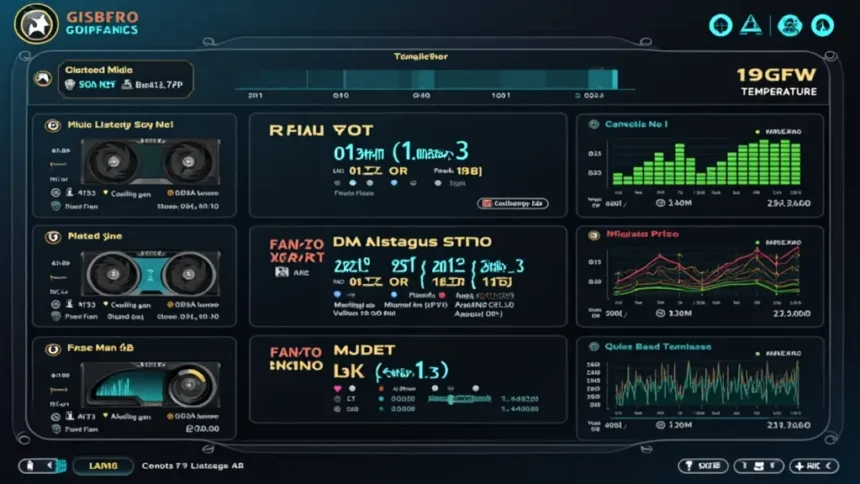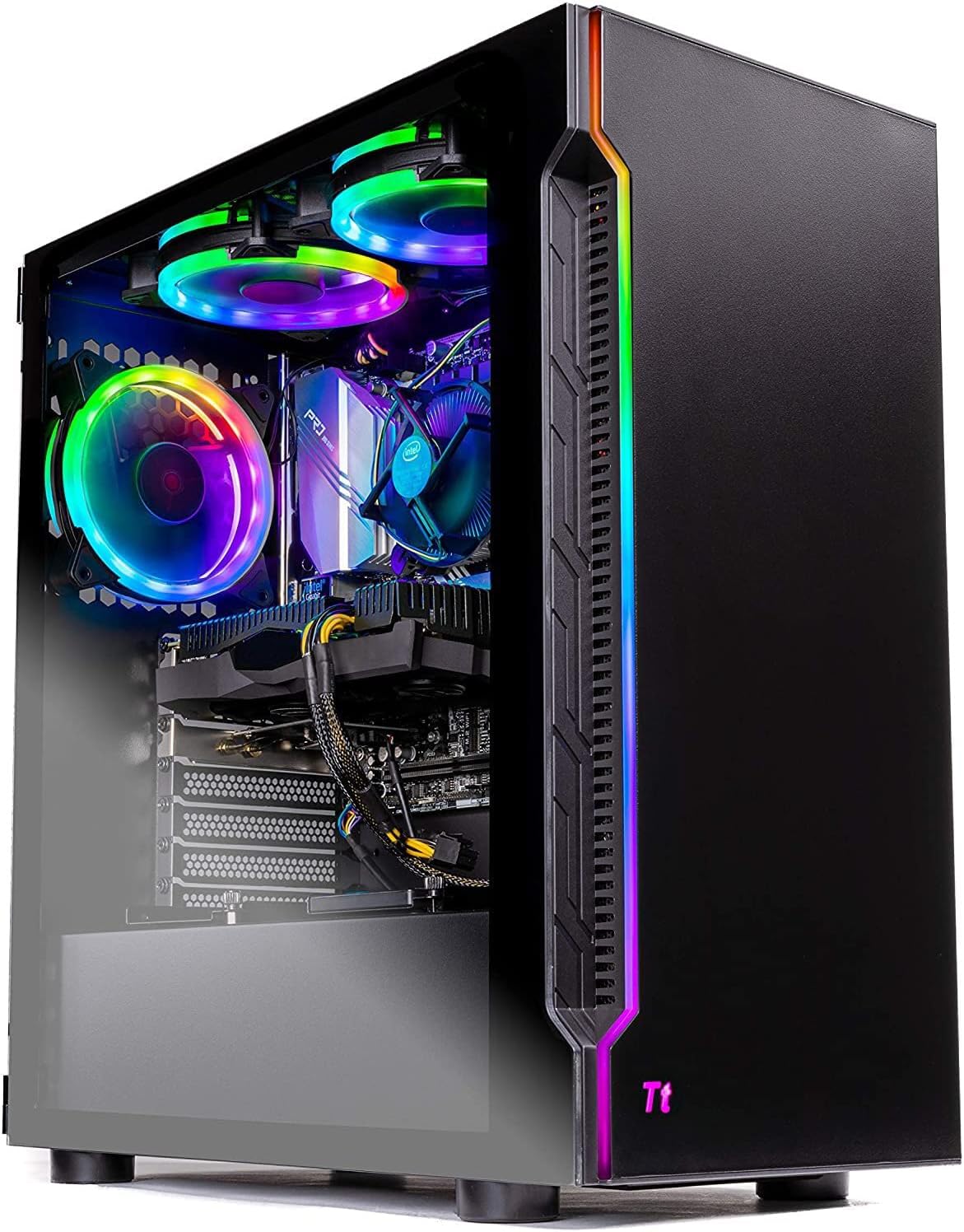GPU temperature is one of the most crucial factors in maintaining your graphics card’s performance and longevity. As gaming and other graphics-intensive tasks push your hardware to its limits, monitoring GPU temperature becomes essential to prevent overheating. But what is a normal GPU temperature? How do you check it? And what can you do to keep it within a safe range? Let’s dive into these critical aspects to ensure your gaming sessions remain smooth and problem-free.
Understanding GPU Temperature
What is GPU Temperature?
GPU temperature refers to the heat generated by your graphics processing unit during operation. Every GPU produces heat as it processes graphical data, and the amount of heat varies depending on workload and cooling efficiency.
Why Does GPU Temperature Matter for Gaming?
High GPU temperature can cause performance issues, such as frame rate drops, system instability, and even permanent hardware damage. Ensuring your GPU stays within a safe temperature range will help maintain optimal performance and prolong its lifespan.
Normal GPU Temperature Ranges
Understanding what constitutes a normal GPU temperature is crucial for gaming enthusiasts. Here’s a breakdown:
Idle GPU Temperature
- When your GPU is not under heavy load, temperatures should remain between 86°F to 104°F (30°C to 40°C).
Gaming GPU Temperature
- During gaming or other high-performance tasks, temperatures generally range from 149°F to 185°F (65°C to 85°C).
Maximum Safe GPU Temperature
- The upper limit for most GPUs is around 194°F (90°C) to 212°F (100°C). Prolonged exposure to these levels can lead to thermal throttling and potential hardware damage.
How to Check GPU Temperature?
Using Built-in Windows Tools
- Task Manager (Press
Ctrl + Shift + Esc> Performance Tab > GPU) - Windows Game Bar (Press
Win + G> Performance Widget)
Third-party Software for Monitoring
- MSI Afterburner (Comprehensive temperature tracking)
- GPU-Z (Lightweight GPU monitoring)
- NZXT CAM (User-friendly interface with detailed stats)
Causes of GPU Overheating
Poor Airflow Inside the Case
- A lack of proper ventilation can trap hot air inside your PC case, increasing GPU temperatures.
Dust Accumulation on GPU Fans
- Dust buildup can block airflow, making it harder for your cooling system to dissipate heat effectively.
Overclocking and Increased Power Usage
- Overclocking pushes your GPU beyond its default settings, generating more heat and requiring better cooling solutions.
Consequences of High GPU Temperature
Performance Throttling and FPS Drops
- When the GPU reaches critical temperatures, it reduces clock speeds to prevent overheating, leading to lower frame rates and stuttering.
Long-term Damage and Reduced Lifespan
- Continuous overheating can degrade components over time, shortening the lifespan of your GPU.
How to Lower GPU Temperature?
Improving Case Airflow
- Ensure your PC case has adequate cooling fans to keep air circulating efficiently.
Cleaning Your GPU and PC Regularly
- Use compressed air to remove dust from GPU fans and heatsinks.
Upgrading Cooling Solutions
- Consider installing aftermarket cooling solutions, such as larger heatsinks or liquid cooling systems.
Air Cooling vs. Liquid Cooling: Which is Better?
Pros and Cons of Air Cooling
✅ Affordable and easy to install
❌ Can be noisy under heavy load
Pros and Cons of Liquid Cooling
✅ More efficient at cooling high-end GPUs
❌ More expensive and requires maintenance
Overclocking and Its Effect on GPU Temperature
How Overclocking Increases GPU Heat
- Overclocking boosts performance but also raises power consumption, increasing heat output.
Ways to Safely Overclock Without Overheating
- Use stress tests to monitor temperature changes and adjust voltage accordingly.
Is Undervolting a Good Solution?
What is Undervolting?
- Undervolting reduces the voltage supplied to your GPU, lowering heat output without sacrificing performance.
How Undervolting Can Reduce GPU Temperature
- By optimizing power efficiency, undervolting can significantly decrease temperatures and extend hardware lifespan.
Best Practices to Maintain a Healthy GPU Temperature
Regular Monitoring and Maintenance
- Check temperatures frequently and clean your system every few months.
Adjusting In-game Graphics Settings
- Lowering settings such as shadows and anti-aliasing can reduce GPU workload and heat generation.
Using External Cooling Solutions
- A cooling pad or external GPU cooler can provide additional thermal management.
Common Myths About GPU Temperature
“High GPU Temperature Always Means Danger”
- GPUs are designed to handle high temperatures, but prolonged overheating is problematic.
“Lowering Resolution Reduces GPU Heat Significantly”
- While it helps, resolution changes alone won’t drastically reduce heat without optimizing other factors.
| Aspect | Temperature Range | Notes |
|---|---|---|
| Idle Use | 86°F – 104°F (30°C – 40°C) | Typical for browsing, streaming, and low-intensity tasks. |
| Gaming | 149°F – 185°F (65°C – 85°C) | Higher temps during intensive gaming and rendering. |
| Maximum Safe Temperature | 194°F (90°C) – 212°F (100°C) | Prolonged exposure above 194°F can be harmful. |
Maintaining a proper GPU temperature is essential for both performance and longevity. Regular monitoring, effective cooling solutions, and simple maintenance steps can prevent overheating and keep your gaming experience smooth. Whether you’re an overclocker or a casual gamer, keeping an eye on GPU temperature ensures you get the best out of your hardware without risking damage.
FAQs
What is a normal GPU temperature while gaming?
A safe GPU temperature while gaming typically ranges from 149°F to 185°F (65°C to 85°C).
How can I check my GPU temperature?
You can check it via Windows Task Manager (Ctrl + Shift + Esc) or third-party software like MSI Afterburner.
What causes GPU overheating?
Common causes include poor airflow, dust accumulation, overclocking, and inadequate cooling solutions.
What happens if my GPU overheats?
It can lead to performance throttling, FPS drops, and even long-term damage to the hardware.
How can I lower my GPU temperature?
Improve airflow, clean your PC regularly, and consider upgrading your cooling system.
What is a normal GPU temperature while gaming?
A normal GPU temperature while gaming typically ranges from 149°F to 185°F (65°C to 85°C). This range can vary based on the intensity of the game and the resolution settings used. If your GPU temperature stays within this range during heavy gaming, it is generally considered safe.
How can I check my GPU temperature?
You can check your GPU temperature using several methods. On Windows 11, open the Task Manager by pressing Ctrl + Shift + Esc, and navigate to the Performance tab to view the GPU temperature. Additionally, third-party applications like MSI Afterburner, GPU-Z, and NZXT CAM can provide detailed monitoring of your GPU temperature.
What causes GPU overheating and how can I prevent it?
GPU overheating can be caused by poor airflow, dust build-up, or inadequate cooling solutions. To prevent GPU overheating, ensure your PC case has good airflow, regularly clean dust from the GPU, and consider upgrading your cooling solution if temperatures remain high.
What is the maximum safe temperature for a GPU?
The maximum safe temperature for a GPU is generally around 194°F (90°C), with some manufacturers stating that GPUs can withstand up to 212°F (100°C). While brief spikes to these levels may not cause immediate damage, prolonged exposure can lead to performance issues and potential damage.
What cooling solutions for GPU can help manage temperature?
Cooling solutions for GPU include air cooling with heatsinks and fans, as well as liquid cooling systems. Upgrading to higher quality fans or using aftermarket cooling solutions can significantly enhance thermal performance and keep your GPU temperature in check.
Is it normal for GPU temperature to fluctuate?
Yes, it is normal for GPU temperature to fluctuate based on the tasks being performed. During idle or low-intensity tasks, temperatures will be lower (between 86°F and 104°F or 30°C and 40°C), while demanding applications like gaming will increase temperatures significantly.
How does overclocking affect GPU temperature?
Overclocking your GPU can lead to increased performance but will also raise GPU temperature. If you choose to overclock, ensure that your cooling solution is adequate to handle the additional heat generated to prevent overheating and potential damage.
What should I do if my GPU temperature is too high?
If your GPU temperature is consistently high, check for dust build-up in the fans, ensure adequate airflow in your PC case, and verify that your cooling solutions are functioning properly. Consider reapplying thermal paste or upgrading your cooling system if necessary.
Got thoughts on GPU temps? 🤔 Drop a comment below! Or check out our other articles to keep your gaming rig cool and happy! 🚀😃🔥












